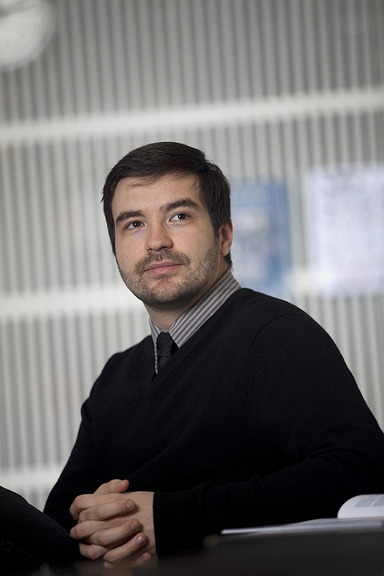Journeys of inspiration: three paths to professorship

What inspires a life of research? How did professors get to where they are, and what passion fueled them along the way? At the Tenured Professors' Installation Talks, collected in this playlist, newly tenured professors share their story. For this article, we asked three of them to share a bit more about their inspiration and their journey in learning and teaching.
İdil Gaziulusoy, Professor, Department of Design
‘I was exposed to social and environmental issues when I was just six, because of my mum who was a librarian at the UN in Türkiye. The more structured spark came during my studies in industrial design. Our lecturer sent us to the library to find a question to study. In the design books section, I found a book about product designs that had been developed to address the environmental issues of the time. That was my hook moment: I wanted to help the world that wasn’t a great place for the environment or humanity.
Systemic change is structural, it's institutional and about changing institutions of society, including value systems. The knowledge we have now is valuable, but we also need to keep learning about systems to understand the futures we can collectively move towards.
There's an increasing gap between what people want to happen in the future versus what they think will happen. To increase people’s imaginative capacity, I recommend that everybody read sci-fi, because it allows us to find narratives of the future that we cannot imagine ourselves. Very often there is this idea of impossibility, but the capacity to imagine unlikely futures is how transformation works.’
Miloš Mladenović, Associate Professor, Department of Built Environment
‘At school, I was really bad at math because it was never taught to me as something you could use for solving things. Understanding the world is not enough, because there is a need to act in it as well. Growing up, I experienced society failing on every level, which helped me to start thinking about what makes a society. Problems don’t happen just because there is an infrastructural problem – instead, everything is connected in a web.
My world of study is everywhere – it's there as soon as I open my door. That’s why I always encourage my students to pay more attention when they’re moving about. Think about this metro station: it’s a complex system in itself to maintain, with lots of different groups involved, like security and cleaning. And the drivers and other staff might use multiple modes of public transportation to get to work. Sometimes that complex system will have problems that cause some delays, but this isn’t just an engineering problem – it's people and systems.
The idea of public space is interesting, because it’s not just something that exists – it’s also something that we create through our actions. Being aware of others in public spaces can enable us to have a little more empathy towards them.’
Matti Hämäläinen, Professor, Department of Neuroscience and Biomedical Engineering
‘There have been several happy coincidences along my journey. The first happened when I was finishing the third year of my studies. I attended a basic neuroscience class organised in the Low Temperature Laboratory at the Helsinki University of Technology. Among other things, this fascinating course took us to see how brains were dissected.
The next summer, there were five of us selected to be summer students in the lab, and all of us wanted to attend the brain project being started. Unfortunately, that wasn’t possible, so in order to select who would go, we decided to draw straws. I was selected, and I think my life would have been quite different if that hadn’t happened. We were told we could change projects next summer if we wanted, but for me that was a lasting decision.
A good colleague of mine in Boston often asked this question: “Are we still having fun?”. Not in the sense of taking things lightly, but that we should enjoy what we do. There’s a lot of focus on many kinds of achievements, especially in science. But it’s important to enjoy ourselves, because achievement follows that enjoyment.’

- Published:
- Updated:
Read more news

Aalto in 2024: Love pictured in the brain, wooden crystals that make fashion shine, recovering minerals from wastewater and more
This year has been another feast of science and art at Aalto UniversityFrom coffee rooms to big crowds – Discussion is important in developing new lifewide learning content in Aalto
Craig Carlson is developing educational content for the target audience of lifewide learning, such as adult learners in working life.